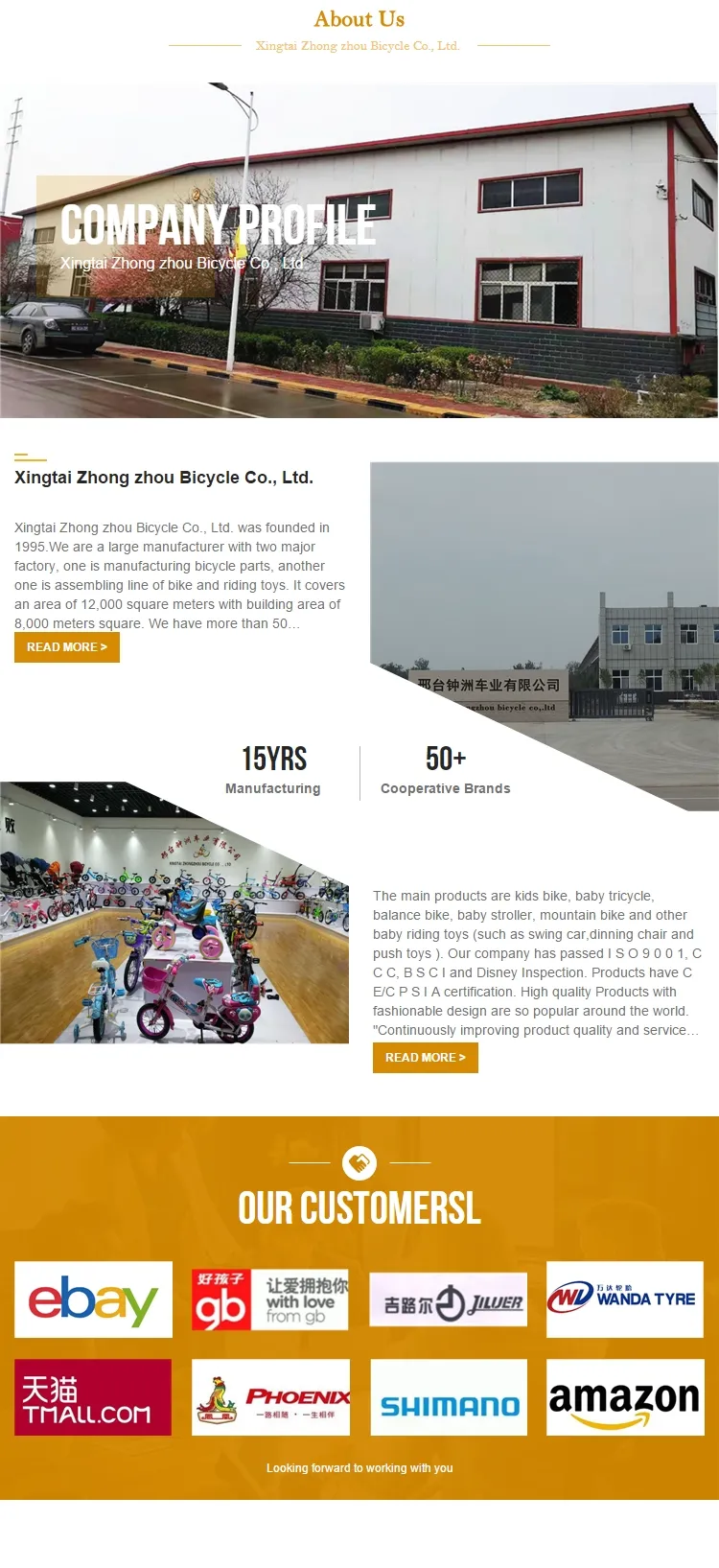Choosing the Right Bike Size for Your Child's Best Riding Experience
Choosing the Right Size Bike for Your Kid A Comprehensive Guide
Finding the perfect size bike for your child is crucial for their safety, comfort, and enjoyment while riding. A bike that is too big or too small can lead to accidents and discourage your child from riding altogether. In this article, we will explore how to determine the right size bike for your kid, taking into account their age, height, and riding experience.
Understanding Bike Sizes
Bikes for children come in different sizes, typically measured by the diameter of their wheels. The common wheel sizes for kids' bikes are 12, 14, 16, 18, 20, and 24. It's essential to note that the right size bike depends more on your child's height than their age, although age can serve as a general guideline.
Age Guidelines for Kids' Bikes
While age is a starting point, the best way to assess bike size is to measure your child. Here’s a rough guide for bike sizes based on age
- 12-inch wheel Recommended for kids aged 2 to 4 years, typically with a height of 2'10 to 3'6. - 14-inch wheel Suitable for ages 4 to 5 years, with a height range of 3'4 to 4'0. - 16-inch wheel Best for kids aged 5 to 7 years, usually between 3'8 to 4'5. - 18-inch wheel For ages 5 to 8 years, with heights from 4'0 to 4'7. - 20-inch wheel Ideal for 6 to 9 years, accommodating children who are 4'5 to 4'9. - 24-inch wheel Typically fits kids aged 8 to 12 years, suitable for heights from 4'9 to 5'4.
Measuring Your Child
To determine the right bike size, you should measure the child’s inseam (the distance from the top of their inner thigh to the ground)
. Here’s how to do it1. Have your child stand barefoot on a hard, flat surface. 2. Use a book or a ruler and place it between their legs, pushing it snugly against their groin. 3. Measure the distance from the top of the book/ruler to the floor.
what size bike for my kid

Once you have the inseam measurement, you can use it to compare with manufacturers' size charts readily available online. Most brands provide specific inseam recommendations for their bikes.
Factors to Consider
1. Adjustable Seat Height Choose a bike with an adjustable seat height so it can grow with your child. A seat that can be raised or lowered easily allows the bike to adapt to your child’s changing height. 2. Frame Geometry Make sure the bike has a child-friendly geometry. A lightweight frame helps with control. A bike that is too heavy can be hard for kids to maneuver.
3. Brakes Train your child to use hand brakes before they are ready. For smaller children, coaster brakes (pedal backward to stop) are simpler; however, kids should eventually transition to hand brakes as they develop coordination.
4. Test Ride Whenever possible, take your child to a bike shop to test ride different sizes. Make sure they can sit comfortably on the bike with both feet touching the ground.
Safety Precautions
Regardless of the bike size, ensure your child wears a properly fitted helmet. Other safety gear, such as knee and elbow pads, can help protect them during their riding adventures.
Conclusion
Choosing the right size bike for your kid can significantly enhance their riding experience. By understanding bike sizes, measuring their inseam, considering important factors, and ensuring safety, you can help your child enjoy the thrill of riding while building their confidence and skills. Remember that as they grow, their bike needs may change, so be prepared to reassess their bike size regularly. Happy cycling!
-
The Perfect Baby TricycleNewsAug.11,2025
-
Ride into Fun with Bikes for KidsNewsAug.11,2025
-
Ride into Adventure with the Perfect Kids Balance BikeNewsAug.11,2025
-
Fun and Safe Riding with the Best Childrens ScootersNewsAug.11,2025
-
Find the Perfect Childrens Bike for Your Little OneNewsAug.11,2025
-
Explore the Best Baby Tricycles for Your Little OneNewsAug.11,2025
-
Three-Wheel Light-Up Scooter Benefits for KidsNewsJul.11,2025








